L’area The Tavolara-Punta Coda Cavallo marine reserve is the sea area on which we dive in. Its extension is about 15.000 sea hectares, and offers us many different dive sites even if the “A area” is closed to divers and to the passage too. The marine park is divided in three areas: A area is a total reserve, B area is a general reserve and C area is a partial reserve. From Porto S.Paolo it takes 10 to 50 minutes navigation to reach our dive points. During the return journey divers can eat typical Sardinian food and listen to the music on the boat.
Even if the dive points are closed one to each other, they have their own characteristics. The underwater landscape changes in few minutes of navigation, for example, if we dive close to the wall of Tavolara island we find big white limestone blocks and clear water allows good visibility even when the weather is cloudy.On the other side, Molara island shows granite pinnacles, some of which go close to the surface and some others create canyons that look like a labyrinth. A single dive description is not enough because from one dive point you can make different tours. The guide chooses daily the best tour, according to the drift, to the presence of other divers on place, to fishes or to groups of big groupers, always caring about safety and divers amusement.
During all of our dives we respect scuba diving safety standards and the local law too. (see www.regionesardegna.it).
What we would like to underline is that the characteristics of this place allows us to find a good and quiet place for diving with all weather conditions always respecting the safety rules.
THE BANK OF THE POPE ( diving depth 17-40mt.)It isconsidered one of the most beautiful dive in the Med sea. Placed atabout 300mt. far from Punta Papa extreme cape of Tavolara isla nd.Its name comes from a rock on the island that looks like a Pope. Thebank rise from a bottom 40mt. to 16mt deep from the surface wherethere is a boa to anchor the boats. Sometimes the drift leaves onlyone possible way of touring and the depth makes this dive no good forthe first level divers. We descend on the rope of the anchor till thetop of the bank where many blue damsel fishes, rainbow wrasse and ZERRI welcome us. As we leave the bank, we swim on neutral buoyancyinto the blue at 24mt. depth following a ridge of stones under us at40mt. depth. During the tour it is easy to meet groupers of differentsizes, groups of breams who play with each other, dentex with a darklook and fancy ombre. This dive should end with a spiral ascendaround the bank, but there are too many things left to see: octopus,MURENA and coloured nudibranch. Most curious divers looking insidethe splits of the rock can find crabs like Granceola, GALATEA andmechanical prawn. And again the gorgonian red and yellow fans put aseal on this great adventure. As we stop for safety all divers looksad and they look down… Hey what a grouper!
TEDDJA LISCIA (divingdepth 9-40mt.)A smooth and vertical wall on the south-center side ofTavolara island means that we are at Teddja Liscia dive point.Wedescend following the wall of the island till the first step of thebottom at 12-15mt depth. At first we lie in wait for a big grouper,and it’s like being on a balcony, because she is good to hideinside the Posidonia plants. As the depth increase there aredifferent landscape for all tastes: big blocks, good grouperhiding-place, small holes house of RE di TRIGLIA and shortpassages where the light pass in and lighten sea flowers and colouredsponges. Sometimes we have to look into the blue for passing fishes.On the way back to the boat, we dive in shallow water and the rangeof landscape seems to guide us into a new dive. Before the safetystop we go once more to look for the big grouper “on the balcony”to tell her “goodbye”!
L’ARCHETTO ( diving depth 7-40mt.)This dive takes its name from a small arch on the wall of Tavolaraand the most careful divers can find one of it even underwater. The first step of the bottom goes almost to 12mt. depth but we can expectspectacular encounters. A big stone with a mushroom form hide bigbreams and ombre. The falling rocks hides octopus hole, moray eel and conger eel. The most careful divers can find some Alicia Mirabilisand think to come back to see their beauty on a night dive. A vast expanses of Posidonia plants covered the bottom till the depth of 40mt. where white gorgonian stay.spettacolari. (Murena helena)
THE ELEPHANT BANK ( diving depth 18-30mt.)It is an unusual dive pointbut it is an amazing diving. There are mountains so big that makes usfeel so small in front of the greatest beauty of nature. Thedive point lies on the bottom a big anchor aged 1700. The tour isaround the big mountains that define the bank. Every big rock hasmany splits whee placed ombre, spider crabs, slipper lobsters andmoray eel. This dive can not stop without visit the elephant rock, sobig that we can go through it. Frequent encounters: groupers, dentex,barracuda, brown meagre, spider crabs, squilla. Other importantencounters: iron anchor, elephant-shaped rock, big grouper, school ofbrown meagre and spider crabs. There are really a lot of dives here,in and out of the park, so it could be repetitive if we tried todescribe them all or just list their peculiarity. If we keep in mindthat we are diving in the Mediterranean sea, it will be easier tomeet groupers (Ephinephelus marginatus), Brown meagres (Sciaenaumbra), dentex (Dentex dentex), rainbow wrasse (Coris julis), slipperlobsters (Scyllarides latus) and dotted sea slugs (Peltodorisatromaculata) rather than red and black anemonefish, Napoleaonfish orsharks.
Here follows a list of name of some of the dive of 2003:
Archetto
Baia Bua
Beach Rock of Spalmatore – info
Beach Rock p.to Istana
Cala Chiesa
Cala Cicale – info
Cala Grano Grottone – info
Ceppo d’ancora Isola Rossa – info
Occhio di Dio
Orecchio di Ulisse
Punta Arresto – info
Punta Levante – info
Punta la Mandria
Relitto dell’Omega –info
Relitto Oyed Qew – info
Secca dei Trigoni
Secca del Fico
Secca del Papa 1
Secca del Papa 2
Secca dell’Elefante
Secca dell’Elefantino
Secca delle Ancore
Secca di Capo Ceraso
Secca di Mezzo Canale
Secca di Monte Petroso 1
Secca di Monte Petroso 2
Secca di p.ta la Mandria
Secca nord di Molara
Secca nord-est di Molara
Relitto del Kt (Orosei)Isola dell’Asinara – info
Secca di Lavezzi (La Maddalena) – info
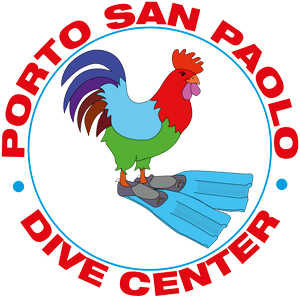
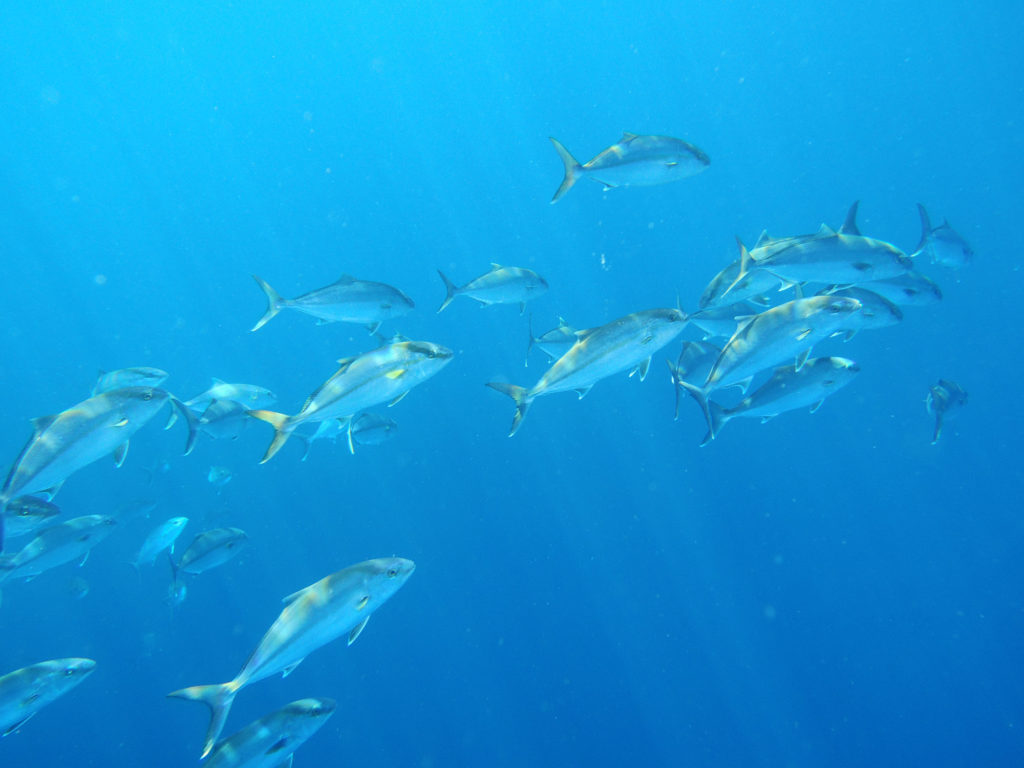


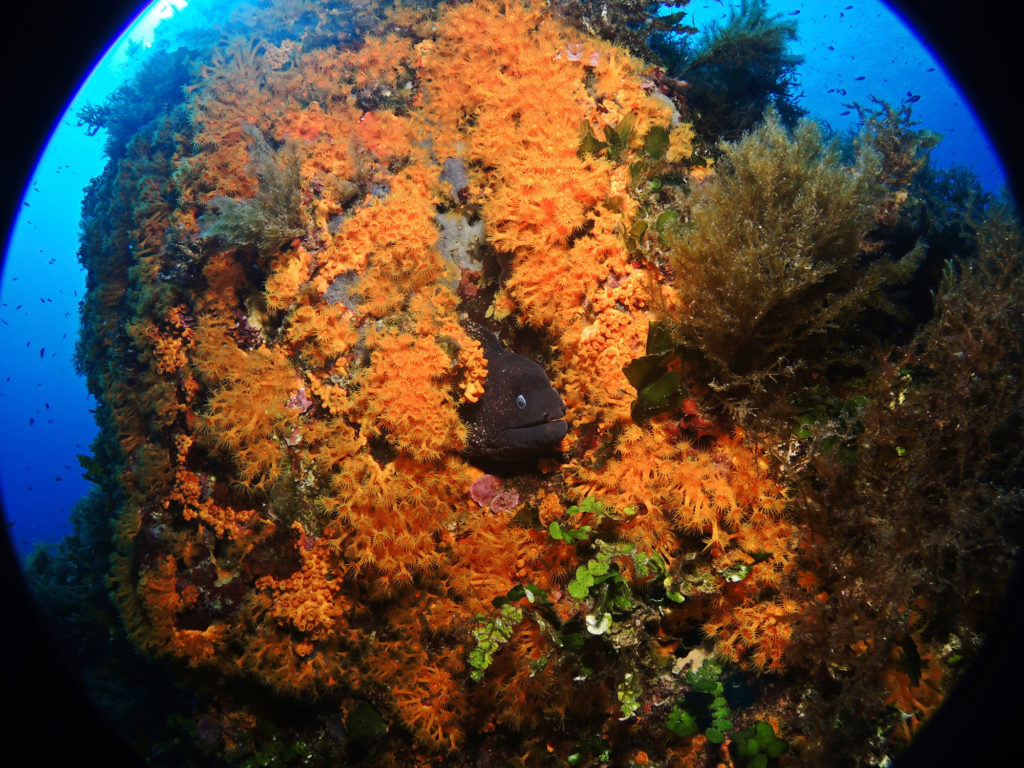
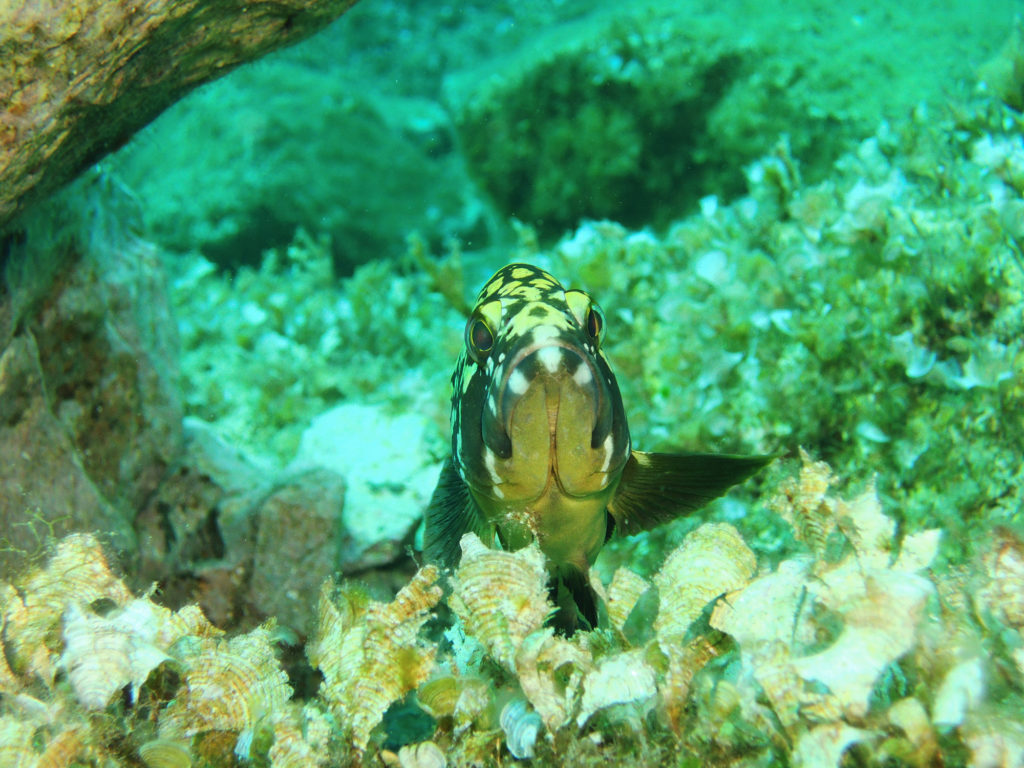
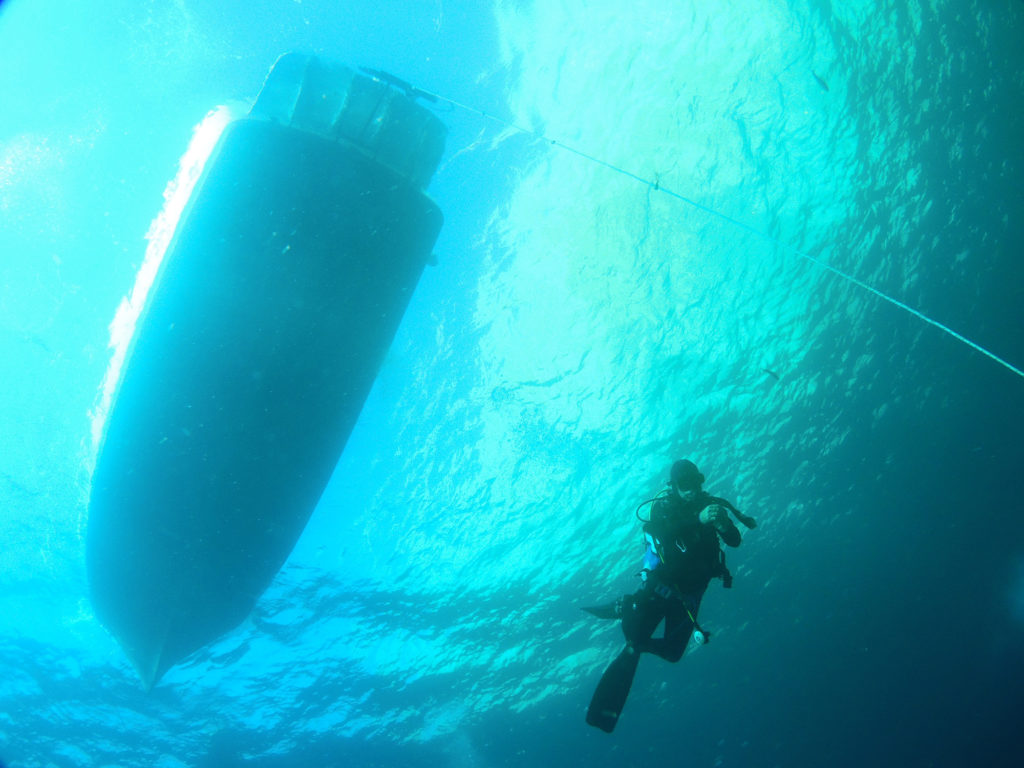
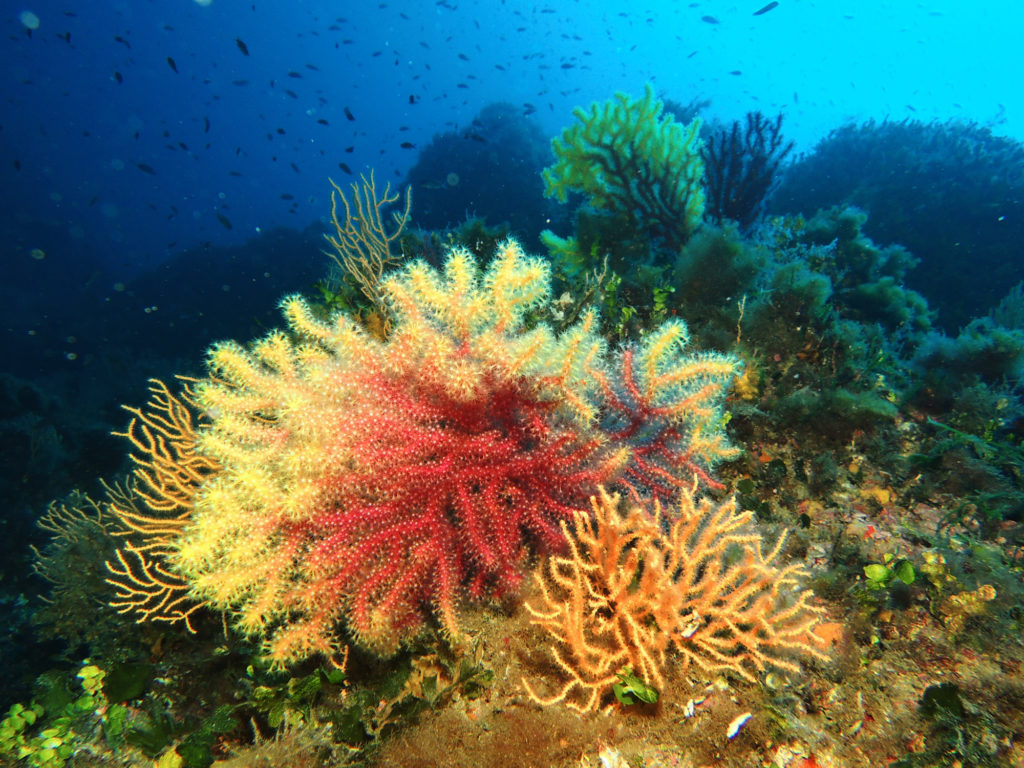
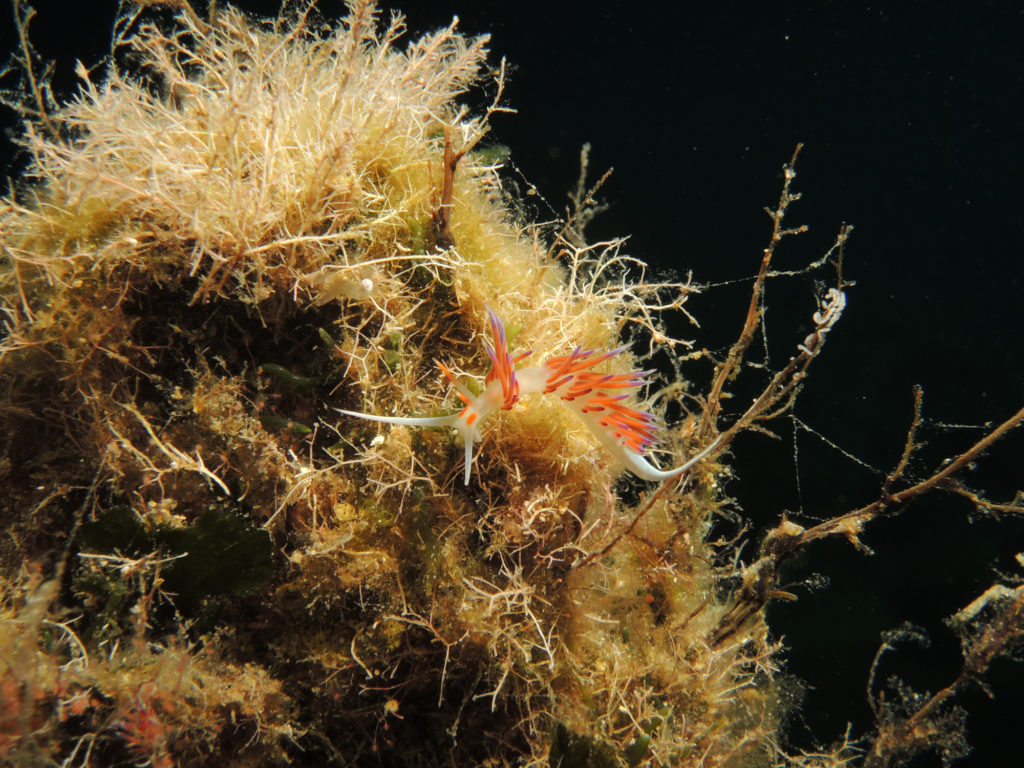
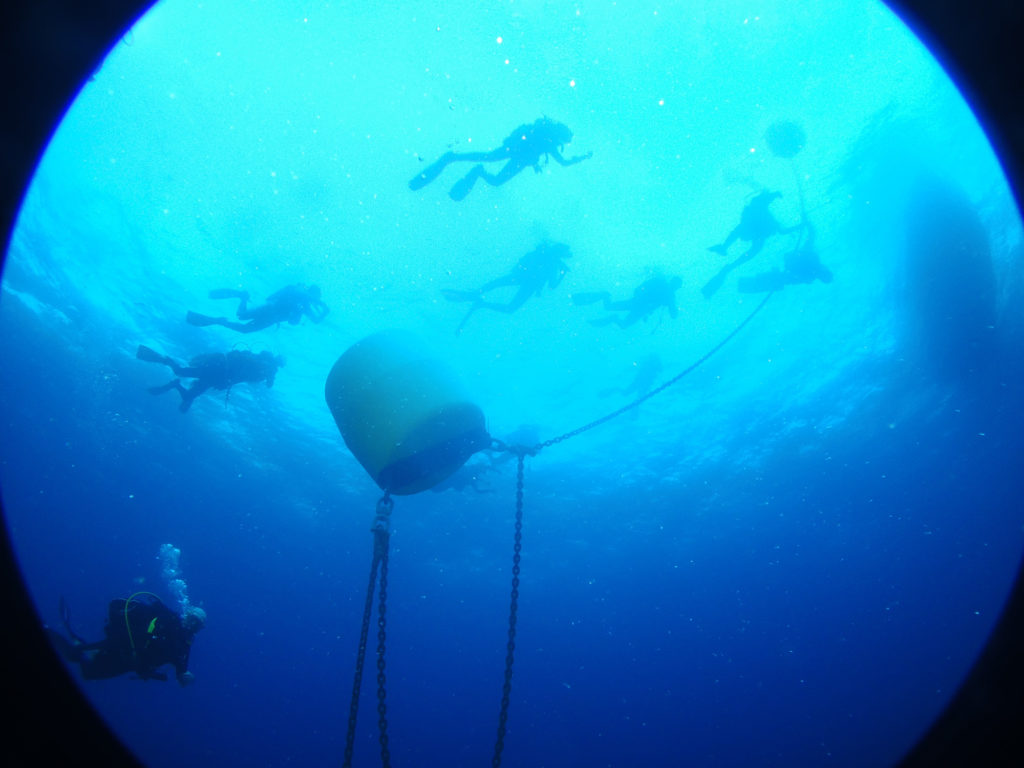


 Roberto Marassi
Roberto Marassi